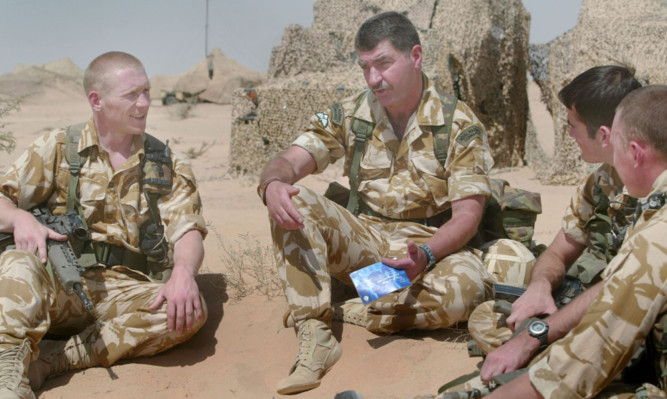Troops from Tayside and Fife who witness horrors in battle need better support on returning from combat, it has been claimed.
High profile cases involving Arbroath-based 45 Commando have thrust the issue of post traumatic stress disorder (PTSD) into the spotlight.
Ralph Hebden, 32, was found dead at the foot of cliffs near Arbroath on April 1, just two weeks before his comrade Wayne Harrison, 33, was sentenced to 15 months in prison at the town’s sheriff court for savagely assaulting his wife.
The MoD would not comment on the unconnected cases but said the mental health of their service personnel is a “top priority”.
Former soldier Ian Wren, 56, from Arbroath, who raises funds for injured troops charities, said there should be more rigorous assessment of returning servicemen.
“It wasn’t until after the Falklands that people started to realise these people coming back may have PTSD,” he said.
“Every one of them should be individually assessed to make sure they are sound in mind and body but they aren’t.
“They will have a debrief when they get back and there will be cases where they know the guys who are struggling, but there will be others who go out, get drunk and go straight down town and batter somebody.”
Mr Wren added: “Soldiers keep it quiet because they see it as a weakness.”
Former Fife marine Jock Hutchison, who runs wounded troops charity Horseback UK, said general society no longer provides the same support as there was following the First World War, when neighbours, friends and colleagues would look after veterans.
He added: “There are huge efforts going on just now from the likes of Combat Stress and other charities to change the way PTSD is treated and managed.
“Around 60 to 70% of them (troops who have seen combat) are troubled with PTSD and they often find themselves alone and feeling alienated from their own community.”
Within the last week the MoD has launched a new smartphone app called Joining Forces, providing information on 11 mental health problems including anxiety, post traumatic stress and depression.
Interactive videos from a lead psychiatrist are available through the service, which was developed by a network of NHS Trusts and is free to download.
Working with the Department of Health, the MoD is implementing recommendations in Dr Andrew Murrison’s report Fighting Fit: A Mental Health Plan for Servicemen and Veterans, including the extension of mental healthcare to qualifying leavers for up to six months after discharge.
